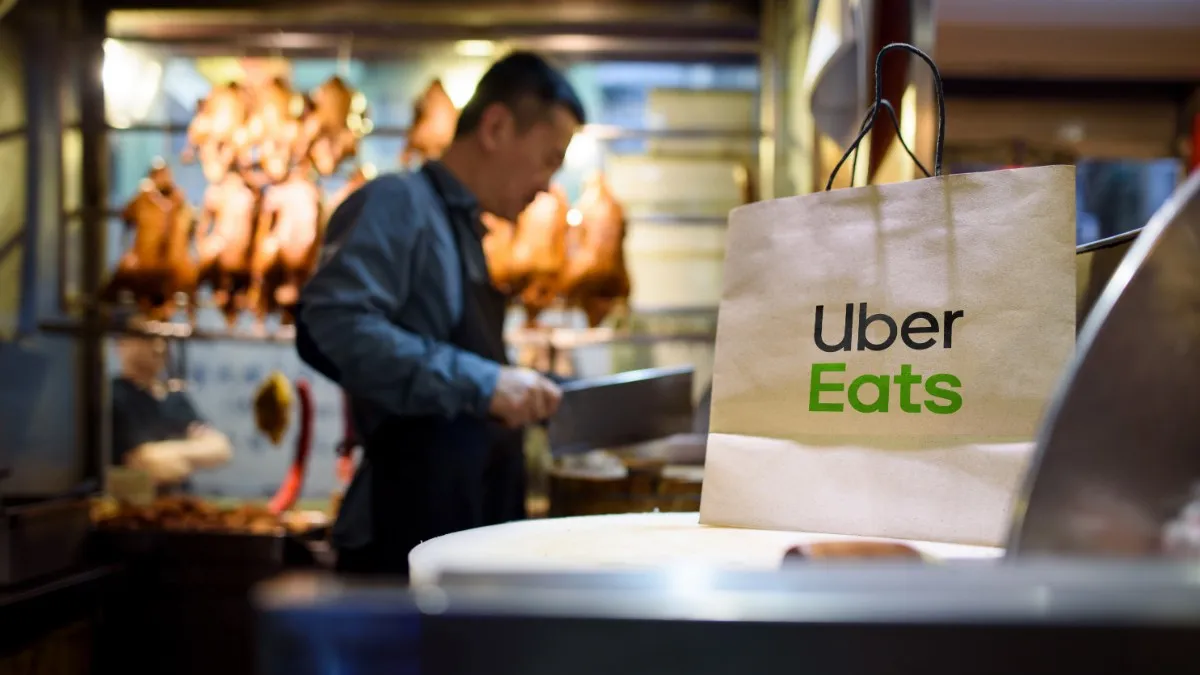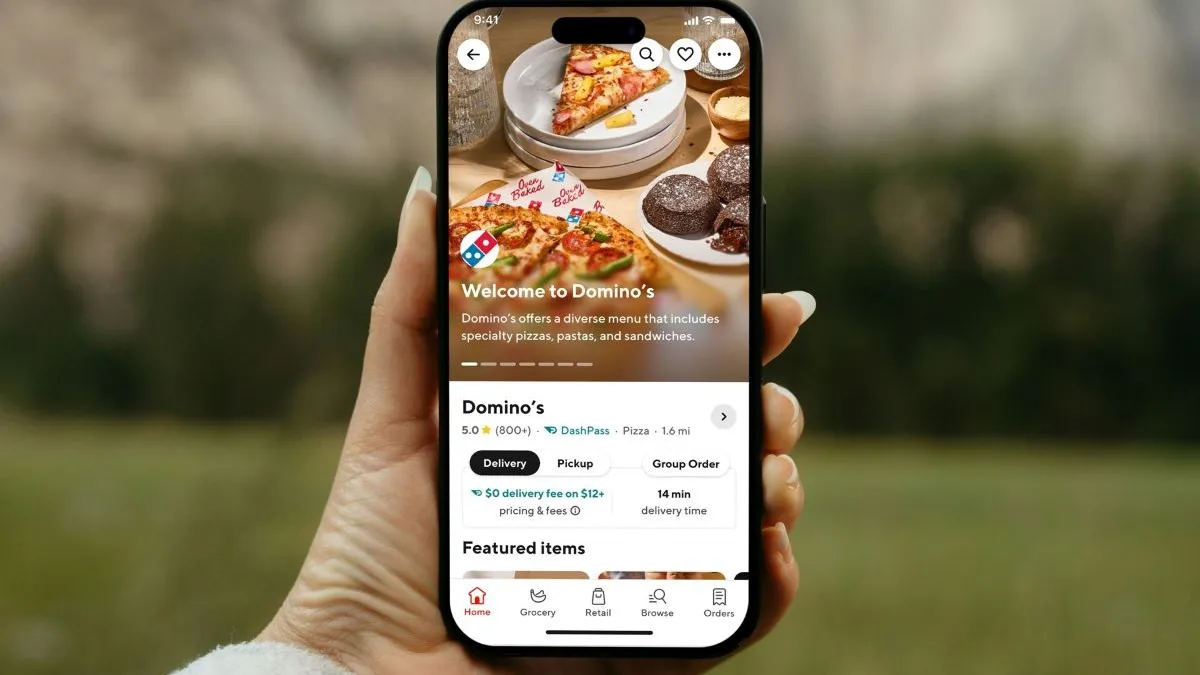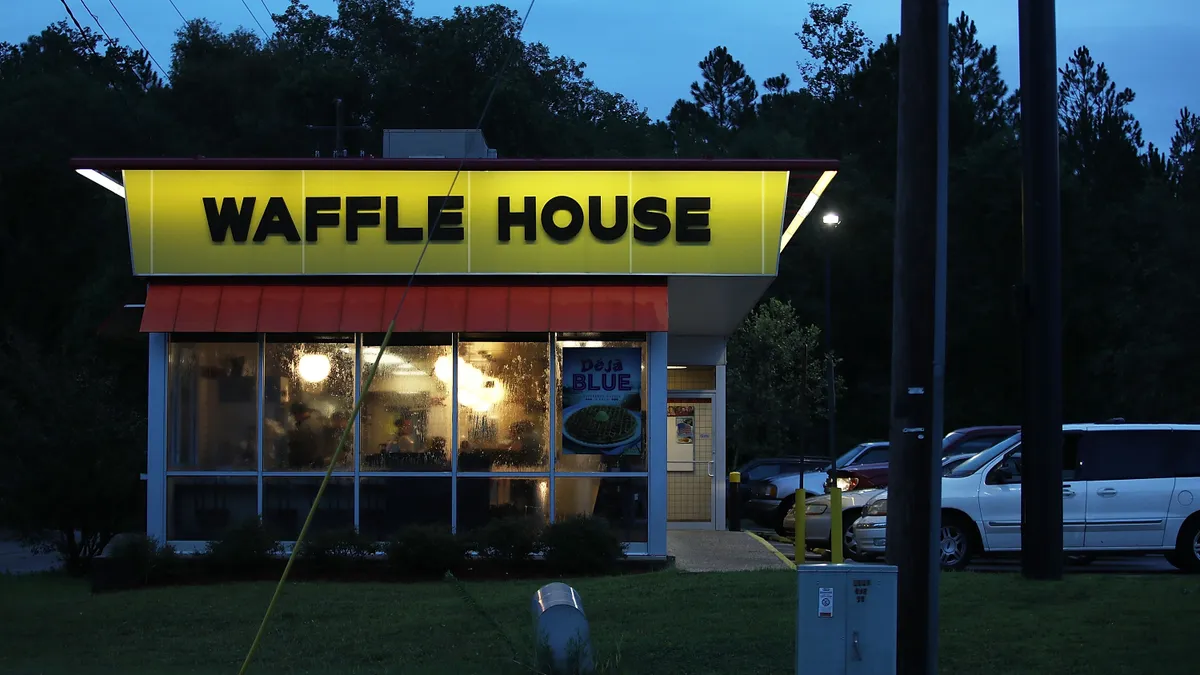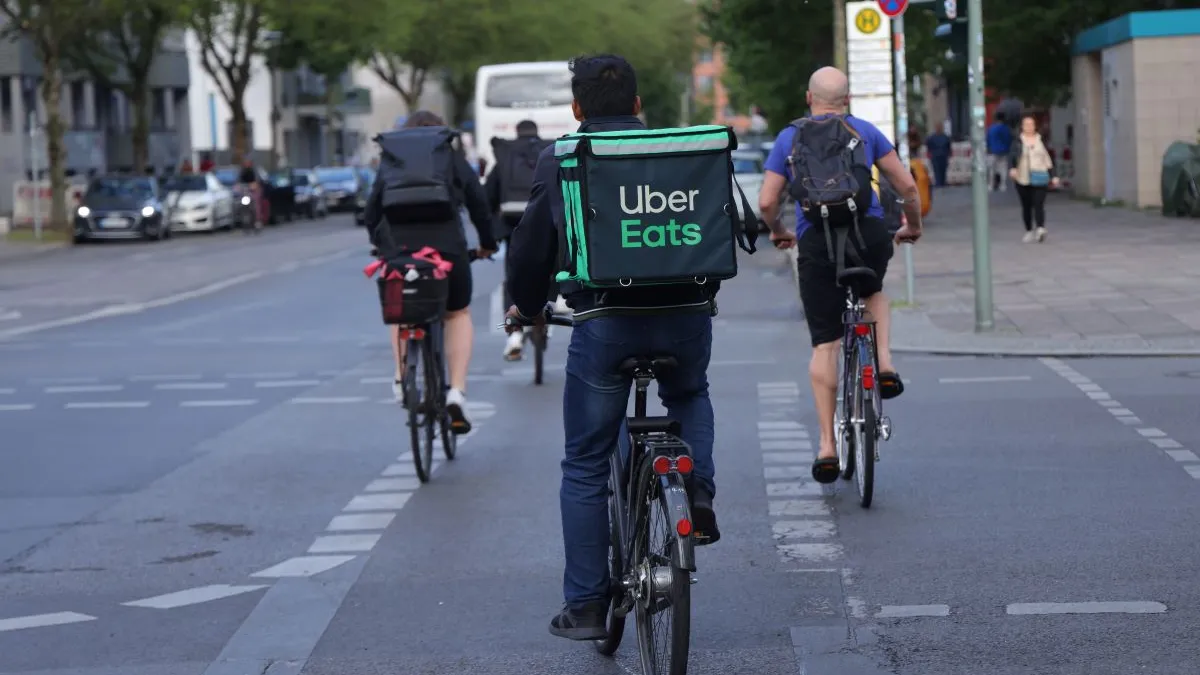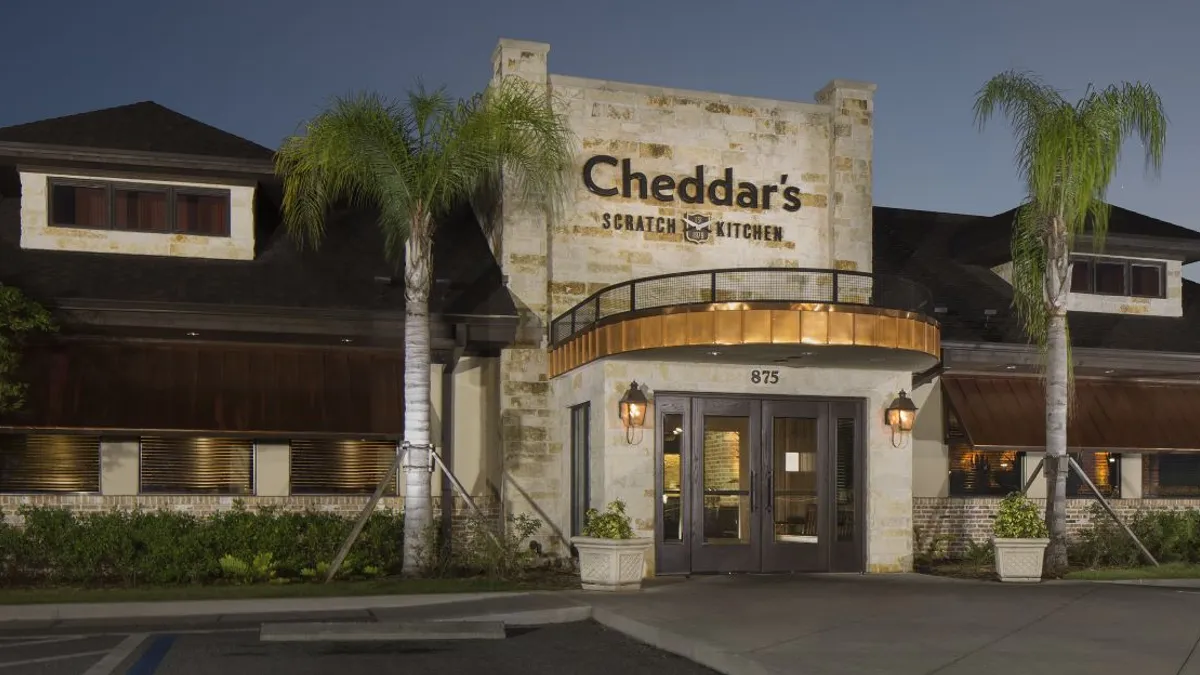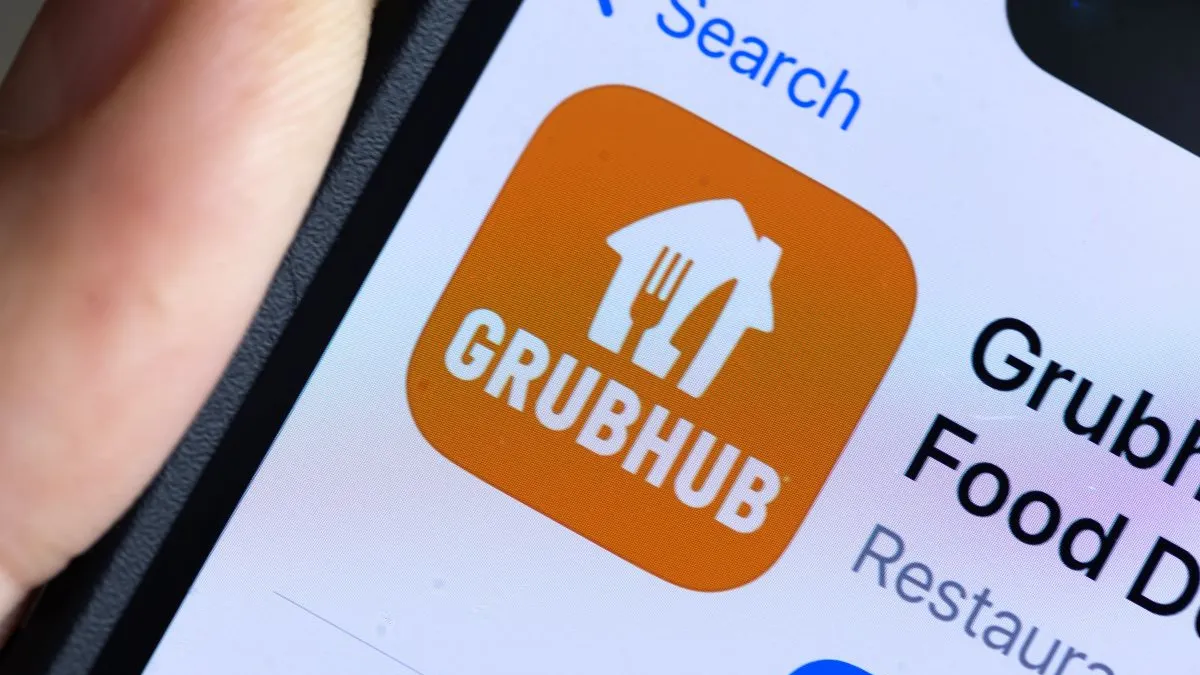This story is part of a series of pieces looking at trends in the industry. Read more with our looks at 5 restaurant trends that will define 2020 and how the plant-based burger craze will plateau, but remain a growth opportunity.
In the delivery game, tacos make an ideal menu item, and Texas-based Torchy's Tacos is using this to its advantage. With off-premise expected to drive over half of its sales within the next five years, taking control of its delivery channel will be key, CEO GJ Hart told Restaurant Dive.
"The consumer is going to continue to want what they want, when they want it, where they want it, how they want it," Hart said. "But it is going to continue to evolve."
Torchy's partnership with DoorDash places its restaurant on the third-party provider's platform but also allows the taco chain to offer delivery directly from its own branded site, he said. Still, the cost of this arrangement adds up.
"Could it be better? Yeah. It's still expensive,” Hart said. "But none of those [third-party operators] are making money."
Torchy's situation is emblematic of a question that’s been eating away at the entire restaurant industry: is delivery actually profitable? Can third-party marketplaces function as they are with free delivery promotions and other discounting?
"Sooner or later someone is going to have to pay for this," Hart said. "The consumer hasn't been paying for it. Investors have been paying for it because it's hard to make those business models work."
Analysts predict that to regain the upper hand in delivery, more restaurants will adjust price models, expand into their own virtual kitchens, renegotiate commission rates and adopt their own branded ordering platforms this year. Delivery aggregators are also saddled with their own profitability problems and are working to improve their relationships with frustrated restaurants to hold revenue steady.
Menu price adjustments can help the bottom line
To squeeze more money out of their third-party delivery partnerships, many restaurants are listing different menu prices on places like Uber Eats and Grubhub than on their own branded channels to offset delivery costs, Noah Glass, founder of online and mobile ordering platform Olo, said during an ICR presentation in January. Consumers expect to pay more when they order for delivery and are willing to do so, he said.
"Delivery partners will allow you to post higher prices on your menus that show up on their website versus what you charge in the store," Sterling Douglass, co-founder and CEO of Chowly, told Restaurant Dive. His company offers POS integration software for restaurants using third-party delivery. "That is a huge help when you talk about profitability for the order that comes through those channels."
El Pollo Loco uses a bifurcated pricing strategy, CEO Bernard Acoca said during ICR in January. Full menus are only accessible through its branded app and website, but the cost of delivery is passed on to the consumer, allowing the company to retain 100% margins on these orders.
On third-party sites, El Pollo Loco diners access a limited menu and pay 15% to 20% more for items. Its menus on marketplaces emphasize family meals, premium items and meal combos, Acoca said.
"The intent here is to offset the commission that we pay with higher average tickets," he said. "So far we've met very, very little resistance."
The company deployed this strategy during Q3 2019 and has since bolstered delivery from 1% of sales to 3%. Digital sales also grew from less than 2% to 5% since Q3.
Just Salad, on the other hand, isn't willing to adjust menu prices online because it could lead to customer assumptions that those prices are the same for in-store or direct orders, CEO Nick Kenner told Restaurant Dive.
"I think it is a dangerous game to play," Kenner said. "I think ultimately, the consumer is going to have to pay."
Other chains have had success renegotiating commission rates. With all of the top delivery providers reaching into new markets across the country in 2019, they reached a level of scale that their delivery metrics are better overall, Douglass said. That has allowed commission rates to come down and they have since 2018, he said.
In 2018,full commission rates were as high as 30% but in 2019, it bumped down to in the 20s, he said. The average commission rates among Chowly's restaurant clients all came down last year, he said.
Bonchon renegotiated with its third-party partners to cut commission rates in half last year, CEO Flynn Dekker said during an ICR presentation. The company is also working on developing its own online ordering channel. As part of its new agreement with Uber Eats, McDonald's also renegotiated its rates while Uber agreed to provide a contribution to support a national advertising campaign.
Branded online ordering is also growing among chains and restaurants, especially since it gives restaurants more control over their customer data as well as the option to farm out delivery to aggregators. This is an important aspect of Torchy's Tacos delivery strategy.
"The more you can drive people to your own sites and/or places where you have that information, the better off you'll be," Hart said.
Several major chains are adopting this strategy. Red Robin is in the process of creating its own platform while chains like El Pollo Loco, Chipotle, Denny's and Macaroni Grill offer direct online ordering websites.
"If you are a restaurant and you’re on the third-party marketplaces that is a great start, but making sure you have a way for your frequent and loyal customers to order directly from you is incredibly important," Douglass said. "That allows the restaurant to provide a similar experience to customers that they want from third-party marketplaces without the high commission rate."
But Douglass doesn’t think this will lead to a wholesale shift where restaurants start to provide their own delivery. Restaurants would need a lot of volume to make that work and volume has to be predictable, he said.
For those restaurants continuing with third-party delivery, the segment's future will come down to how well third-party providers work with them.
"I would love to see [third-party providers] partner more with restaurant groups to go into some of the new innovations," Douglass said. "Grubhub partnering with Lettuce Entertain You for a virtual kitchen is a great example in how a marketplace and a restaurant community can work together to provide a better experience to their customers to be a mutually beneficial relationship."
Restaurants shift delivery strategy for 2020
While shared kitchens are becoming all the rage among restaurant operators wishing to expand their footprint — and delivery radius — without paying for expensive real estate, other restaurants are using their existing kitchens to expand into virtual restaurants.
These operations allow brands to test menu items for delivery or allow for cross-pollination of different restaurant brands under one portfolio. And delivery providers are helping restaurants develop them, too. Grubhub partnered with Lettuce Entertain You to provide branded Whole30 meals last year. The virtual restaurant, Whole30 Delivered, is operated by Lettuce and available to order exclusively on Grubhub's marketplace.
Just Salad also launched a virtual brand, Health Tribes, in October through a partnership with Grubhub. It allows the 50-chain salad brand to experiment with new items and then move those items to Just Salad's menu, Kenner said. The company prepares the salad in store for delivery or pickup through Grubhub's marketplace.
This option also creates a different daypart for the company, he said. While Just Salad skews more toward lunch, Health Tribes skews toward dinner. It is also attracting new customers that wouldn’t necessarily go to Just Salad and can continue to evolve as dietary preferences change, he said.
"I think virtual restaurants give you a lot of lift. A cloud kitchen is a totally different gig. Anytime you can help your operator [improve the] top line, I think that makes a lot of sense."

Andy Wiederhorn
CEO, FAT Brands
FAT Brands is taking a somewhat similar route, using a virtual kitchen model where operators use their existing kitchens to offer other menu items from sister brands, such as having a Fatburger franchisee offer items from Hurricane's.
"It's all incremental revenue [for the operator]," Andy Wiederhorn, FAT Brands CEO, told Restaurant Dive. "There's no real estate to pay for. I think virtual restaurants give you a lot of lift. A cloud kitchen is a totally different gig. Anytime you can help your operator [improve the] top line, I think that makes a lot of sense."
He remains skeptical of shared kitchens, like CloudKitchens, working out, especially since the average delivery concept has returns of $200,000 to $300,000 whereas an average restaurant has average unit volumes of $1 million or more. With rent in the thousands of dollars for a stall in a cloud kitchen, an operator wouldn’t necessarily have the same amount of profitability as a restaurant.
"For an established operator like us, you can't just drop a ghost kitchen in the middle of a bunch of franchisees," he said. "[The ghost kitchen] is going to steal all their delivery business. It has to be in markets we’re not in."
How aggregators are making delivery work
In 2019, it became clear that delivery providers needed to improve their relationships with restaurants.
Following criticism in New York over its phone policy where restaurants said they were being incorrectly charged for phone calls that didn't lead to an order, Grubhub revised its standards nationwide, allowing restaurants more time to look back at charges made from potential phone orders. But it may have more work to do.
Grubhub executives told investors during its Q3 2019 call that it would start listing non-partnered relationships to grow its platform and become more competitive, but it’s already receiving backlash from restaurants who say they never intended to offer delivery and outdated menus are appearing on the platform.
Because of this backlash, third-party aggregators are adapting strategies to improve their partnerships. Grubhub launched a tech suite focused on pickup orders that can work with any sized restaurant and offers POS integration, self-order kiosks, a kitchen display system and real-time order monitoring for guests. Postmates and Uber Eats also added group ordering and other customer-facing features that reduce total delivery costs.
As diners become more less loyal to where they order from, restaurants are finding it beneficial to work with multiple providers. McDonald's, Del Taco and El Pollo Loco are a few QSRs that expanded their delivery partnerships to multiple providers within the last year.
"Operators should work with however many marketplaces they want to work with that will play by the operators' rules."

Noah Glass
Founder, Olo
"Operators should work with however many marketplaces they want to work with that will play by the operators' rules," Glass said.
He said restaurants that work with only one delivery provider is similar to saying they only accept Visa cards instead of working with multiple payment options, which limits customer options.
Uber Eats has already shifted its strategy away from focusing on exclusive partnerships with restaurants, exploring ways that encourage restaurants to work with it because of what they offer and not because they are tied to a contract, Janelle Sallenave, head of Uber Eats in U.S. and Canada, said during the ICR conference in January.
"We’re not wedded to the way things were done in the past," Sallenave said. "We're really interested in building… sustainable businesses."
That might mean more competitive take rates and working closely with its restaurant partners to find creative innovation or discussing geographic expansion or the benefits of using a virtual kitchen space, she said.
For example, it works with a bakery in New York that is a traditional cafe in the morning and then flips its kitchen during lunch to provide burgers through a virtual kitchen, she said.
Its strategy is also focused on making sure orders are delivered within 29 minutes or less. So far they have helped reduce defect rates, she said.
"There are many in the [third-party aggregator] space in the U.S. that were just about grow and figure it out later, and I think later has really arrived," she said.
A future with fewer delivery providers
With unchecked growth and so many regional and national players, analysts expect delivery will become profitable with consolidation. Multiple platforms and tech and service providers working alongside delivery are looking at M&A as a way to diversify and grow, Josh Benn, managing director and global head of consumer, food, restaurant and retail M&A at Duff & Phelps, told Restaurant Dive.
This will lead to more scale and diversity among larger payers with broader breadths of services, he said. And with increased levels of profitability, pricing models will get better, which could benefit restaurants in the end, he said.
"Less competition means a larger profit pool and potentially more regulation as the larger players get closer to becoming ‘delivery utilities,’” Michael Schaefer, global lead, food and beverage at Euromonitor International, told Restaurant Dive in an email.
And plenty of M&A has already been rumored among the top four U.S providers within the last two years. Reports surfaced in January speculating that Uber Eats and DoorDash discussed a merger six months ago. Grubhub denied reports that it was for sale, but told Restaurant Dive that it anticipates strategic opportunities for acquisitions this year. Postmates has also had to squelch rumors of merger activity over the last two years.
Uber has been moving to consolidate and exit markets where it isn’t a top provider, leaving India and South Korea in the last 12 months. Schaefer said Grubhub could be an interesting potential target because its network of sellers often handle their own delivery and the company is profitable.
While he said he doesn't see Amazon buying a delivery provider this year, it is already active in the third-party delivery space, with its own network of drivers and contractors handling last-mile delivery of Amazon packages. Amazon left the food delivery business last year in the U.S., but led a $575 million fund for Deliveroo, showing that the company still has interest in the space.
Despite the ongoing speculation of who is buying who, delivery providers will still continue to face pressure to boost profitability.
"Major investors, (SoftBank above all) are known to be pushing for consolidation in particular and a clear path to profitability more generally," Schaefer said.



